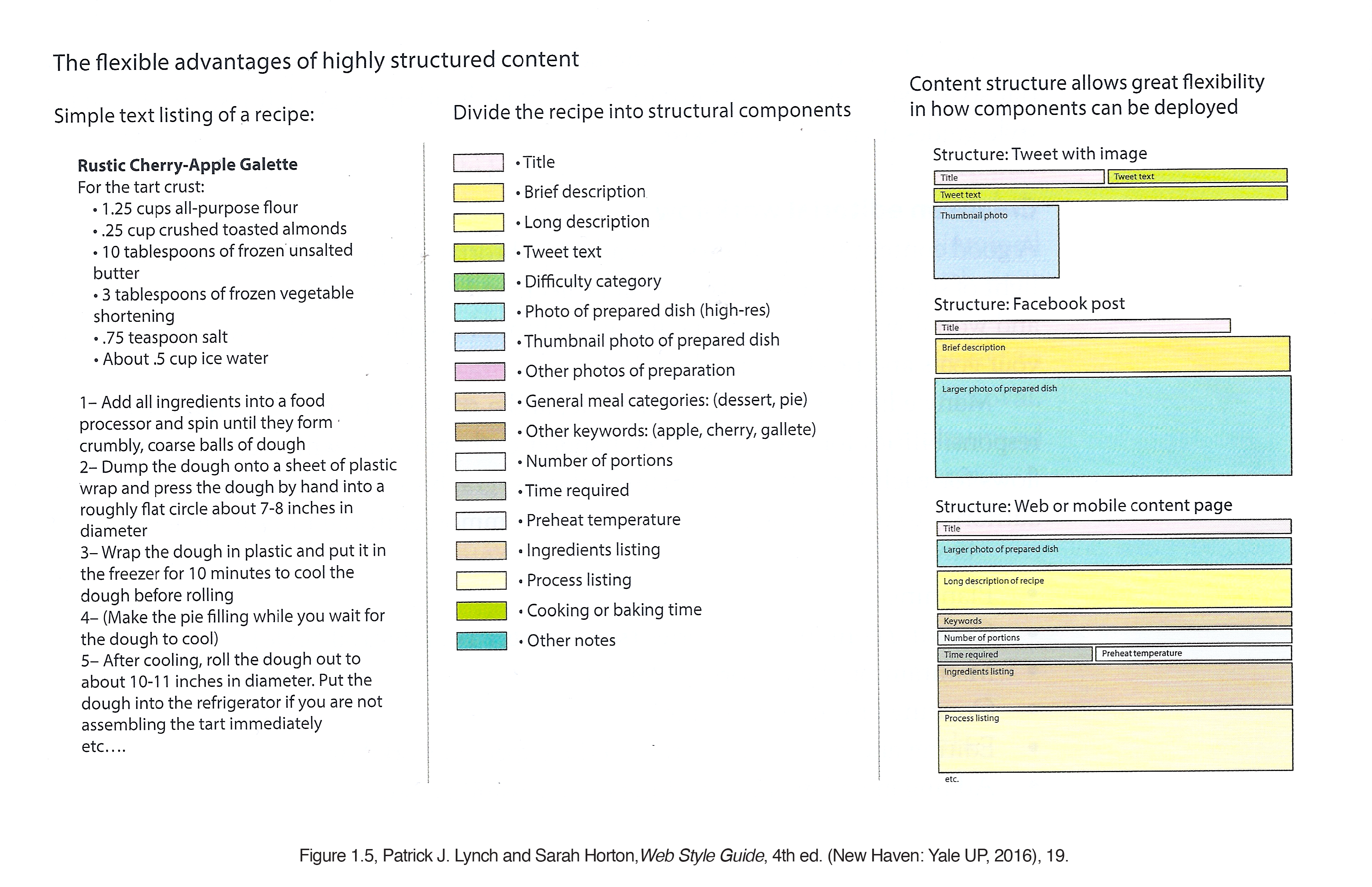Creating a Content Strategy
Your organization should have "a content strategy document that details all of the elements described below, with recommendations for resources, work flows, and editorial team members and their roles and responsibilities, while incorporating guidance or style documents that describe the voice and tone, content structure, content templates, and other guides for content contributors like writers, photographers, graphics artists, and audiovisual media creators" (16).
- Define your target audience (16)
- Articulate key messages and business value (17-18)
- Choose your distribution media (18)
- Specify the content structure (18-19)
- Provide voice, tone, and editorial guidance (19)
- Create an editorial work flow (20)
- Stipulate governance and the content life cycle (21)
Specify the content structure (14; 18-19)
This is probably the biggest change brought by new communications technologies, so it deserves emphasis. As the authors state, content today requires "much more structure, modularity, and metadata" than in previous eras (14).

Social Media Strategy
A clearly defined social media strategy is today a critically important part of the overall content strategy for all types of organizations.
In this section, the authors make six recommendations for the effective use of social media.
- Define your audience (22-23)
- Define business objectives (22)
- Project—and protect—your brand and enterprise identity (23-24)
- Produce compelling content (24-25)
- Determine optimal timing and frequency of posts (25-28)
- Organize and schedule social media activities (28)
“Define your audience” (16; 22-23)
Stop thinking about building a channel. What you’re building is an audience.
This advice from a professional YouTuber reflects a crucial insight. Any kind of media content succeeds or fails to the extent that it serves a specific group of people.
And this is particularly true for social media influencers and creators, since their audience is their product. Entrepreneurs on YouTube and Instagram earn the vast majority of their money from corporate advertisers and sponsors. What these corporations are buying is access to a narrowly targeted and highly engaged audience.
“Protect your brand and enterprise identity” (23-24)
Two universities offer examples of ways that social media can hurt your organization.
- Geo "The White boy" gettin crunk at Clayton State!
- Anyone can add your organization's name to their posts' tags and title. As a result, anyone can affect your organization's social media presence.
- University officer under fire after Confederate flag Facebook post
- Employees are also a frequent source of "off-message" content. In 2012, "A Clayton State representative told Jones the university doesn't have a policy that deals with employees and their personal social sites."
- Police pepper spraying and arresting students at UC Davis
- This video went viral in 2011. By December 2016 it had been viewed almost 3 million times.
- UC Davis spent thousands to scrub pepper-spray references from Internet
- UC Davis chancellor Linda Katehi was removed from her post and eventually resigned, in part because of the university's botched response to the video.
